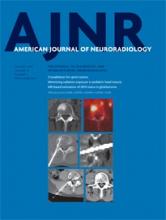Radiofrequency ablation (RFA) has been used for more than 20 years as a minimally invasive treatment of tumor. It has been widely recognized by scholars.1,2 In the past 10 years, RFA of thyroid nodules has developed rapidly because of the application of moving-shot technique, solving the problem of the important structures around the thyroid. A number of studies have shown that among the current treatment methods for benign thyroid nodules, RFA has many prominent advantages over the others, such as being minimally invasive, effective, relatively safe, cosmetically satisfactory, and having lower recurrence and so forth.3,4
Obviously, however, how to select the RFA cases, not only to treat but also to identify them, was a key issue that concerned Bai et al. Based on a comprehensive analysis of the literature, the results of multicenter studies, and expert consensus, an RFA recommendation was published in 2012 by Korean Society of Thyroid Radiology (KSThR).5 In this publication, the indications for RFA of benign thyroid nodules included patients with nodule-related clinical problems: 1) symptoms of neck pain, dysphasia, foreign body sensation, discomfort, and cough; 2) cosmetic problems; and 3) autonomously functioning thyroid nodules causing problems related to thyrotoxicosis. Patients with nodules with a maximum diameter of >2 cm that continue to grow may be considered for thyroid RFA on the basis of symptoms and clinical concerns. The KSThR did not recommend thyroid RFA for follicular neoplasms or primary thyroid cancers because there is no evidence of treatment benefit. Before treatment, thyroid nodules should be confirmed as benign on at least 2 separate sonography-guided fine-needle aspirations and/or core needle biopsies.
At present, the concerning issue is the risk of malignancy in symptomatic nodular goiter. Ucler et al6 and Lee et al7 showed that the accuracy of fine-needle aspiration biopsy (FNAB) was 64.1%–99.6%. The diagnosis of false-negative findings was mainly due to groups of small cancer cells in the nodules and small cancers invisible under sonography. The results of the 2 punctures of the nodules in different places at different times should be benign, to avoid the risk of malignancy.8 Furthermore, with combined elastography or contrast-enhanced sonography, the puncture point and results are more accurate. The operation for benign thyroid nodules is thyroidectomy, and the identification standard is intraoperative frozen pathology. Prades et al9 reported that the accuracy of frozen pathology was 90% and maybe the potential malignancy was emerged in “benign” nodules. Negro et al10 reported that postoperative pathology of symptomatic nodular goiter accidentally confirmed microcarcinoma in 5%; papillary thyroid microcarcinoma (PTMC) was 96%, and there was the possibility of recurrence. With no difference from pathology, which determined the operation mode, FNAB was used for preoperative diagnosis in all minimally invasive treatments. Ito et al11 reported that there was no obvious growth and metastasis in the 8-year follow-up without treatment of 732 cases of PTMC. Yue et al12 reported that during the 3-month follow-up period, ablation appears to be a safe and effective technique for solitary T1N0M0 PTMC.
Genetic testing had been used in the diagnosis of benign nodules undetermined by FNAB. Several molecular assays have been developed to detect the B-Raf proto-oncogene (BRAF) V600E mutation in fine-needle aspirates for the diagnosis of papillary thyroid cancer (PTC).13 Musholt et al14 considered that mutations of RET/PTC, RAS, and PAX8/peroxisome proliferator-activated receptor γ (PPARγ) were predominantly associated with thyroid malignancy with varying frequency and had less impact on the clinical management. However, in the study of Song et al,15 BRAF mutations were the most common ones observed in PTCs, followed by RET/PTC rearrangements and RAS mutations, while follicular thyroid cancers were more likely to have RAS mutations or PAX8/PPARγ rearrangements.15 Therefore, more extensive research is needed in genetic testing.
In conclusion, we suggested that RFA would be used as the first-line treatment of benign thyroid nodules with strict indications chosen. Elastography, contrast-enhanced sonography, and genetic testing would be used to differentiate the benign and malignant lesions.
References
- © 2016 by American Journal of Neuroradiology







